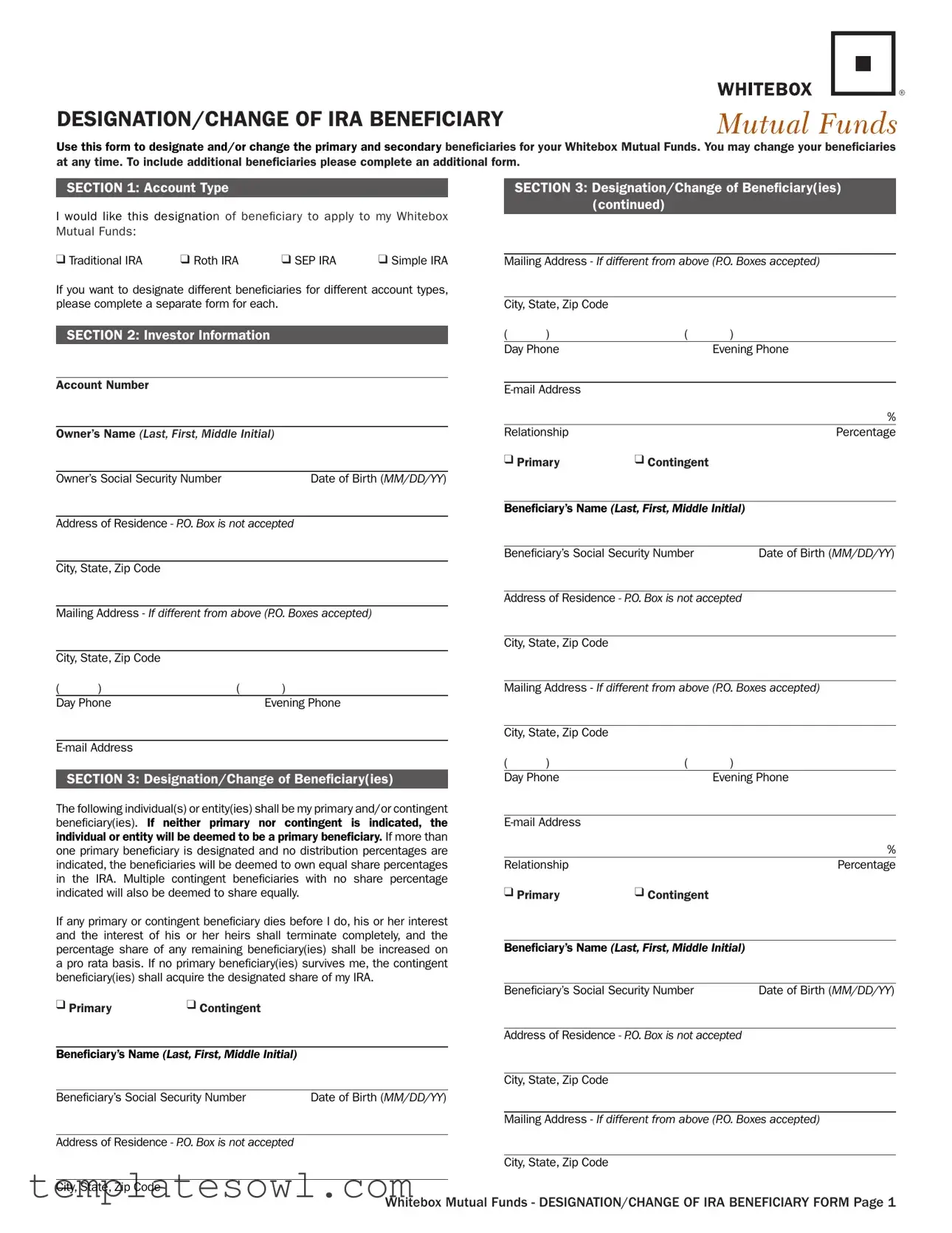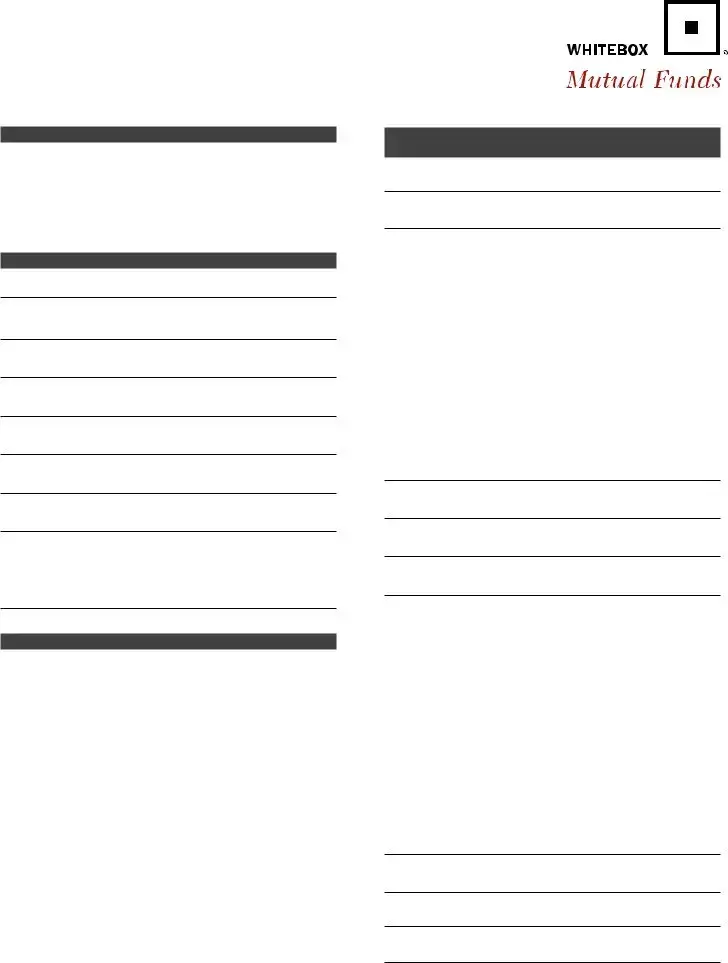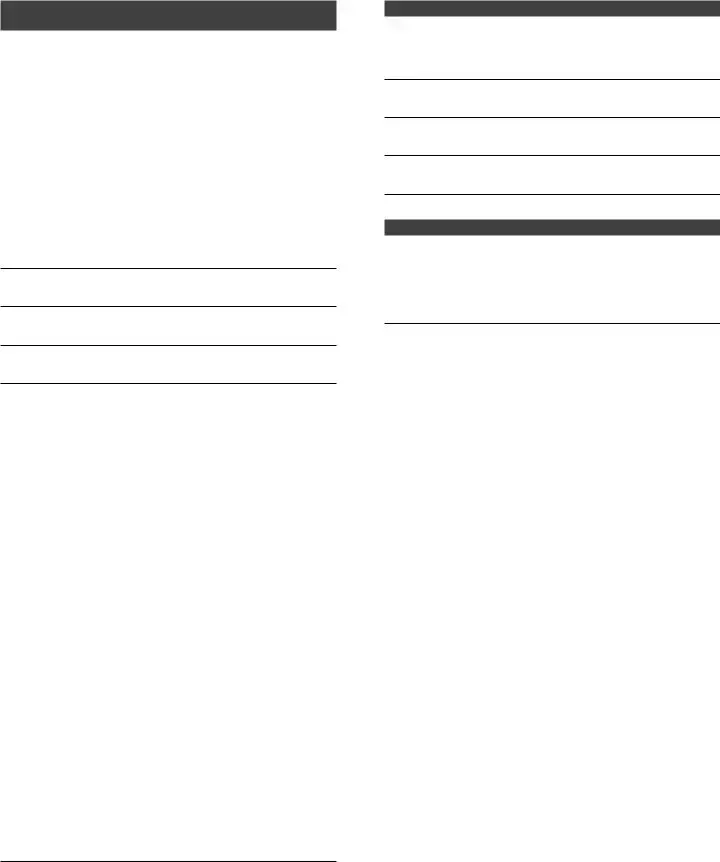What is the MT Bank Beneficiary form used for?
The MT Bank Beneficiary form allows individuals to designate or change the primary and secondary beneficiaries for their Whitebox Mutual Funds accounts. This form is essential for ensuring that your assets are distributed according to your wishes after your passing. You can update your beneficiaries at any time by completing this form.
Who can be listed as a beneficiary on the form?
Beneficiaries can include individuals or entities. You can name multiple primary and contingent beneficiaries. If you choose multiple primary beneficiaries and do not specify percentages for each, they will share the assets equally. The same rule applies for contingent beneficiaries.
Can I change my beneficiaries after submitting the form?
Yes, you may change your beneficiaries at any time by completing a new MT Bank Beneficiary form. The change will take effect once the new form is received and accepted by Whitebox Mutual Funds.
What should I do if I want to designate different beneficiaries for different account types?
If you wish to designate different beneficiaries for different account types (such as Traditional IRA, Roth IRA, etc.), it is necessary to complete a separate form for each account type. This ensures that each account is handled according to your specific wishes.
What information do I need to provide on the form?
You will need to provide several important details like your account number, personal information (name, Social Security Number, date of birth), and the details of your beneficiaries (name, Social Security Number, date of birth, relationship, and contact information). Ensuring this information is accurate will help avoid any disputes later on.
Do I need my spouse's consent if I designate someone else as a primary beneficiary?
If you are married and choose to designate a primary beneficiary other than your spouse, their consent is required. This is crucial in community or marital property states due to potential tax implications. Your spouse must acknowledge the designation by signing the form.
What happens if my beneficiary predeceases me?
If a primary beneficiary dies before you, their portion of the inherited assets will be reallocated among any remaining beneficiaries on a pro-rata basis. If no primary beneficiaries are alive at your passing, the contingent beneficiaries will receive your assets as designated on the form.
What is the process for submitting the form?
Once you have completed the MT Bank Beneficiary form, you should mail it to the designated address provided on the form or submit it via any available method that Whitebox Mutual Funds may have specified. It is recommended to retain a copy for your records.
Who should I contact if I have questions about the form?
If you have any questions regarding the MT Bank Beneficiary form or need assistance, you can reach out to an Investor Service Representative at 1-855-296-2866. You may also visit the Whitebox Mutual Funds website for more information and resources.


